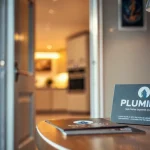Understanding Pool Safety Regulations in the UK
Navigating pool safety regulations in the UK is crucial for ensuring compliance and protecting residents. The UK has stringent laws and standards in place, aimed at minimising the risk of accidents. The Building Regulations 2010 and specific British Standards provide comprehensive guidelines for safety features such as covers, alarms, and barriers.
Key Responsibilities of Home Builders
Home builders play a pivotal role in adhering to these regulations. They must ensure that all pool installations meet the prescribed safety standards and incorporate necessary preventive measures, such as certified safety barriers and appropriate signage. Builders also need to provide thorough documentation demonstrating UK compliance with safety regulations for each project.
This might interest you : Elevate your modern uk home”s style with the ultimate pool design
Consequences of Non-Compliance
Failing to comply with pool safety standards can lead to severe consequences. Non-compliance may result in legal actions, fines, and potential liabilities. More importantly, neglecting regulations could lead to increased safety risks for users, damaging a builder’s reputation. As a preventive measure, building inspectors should be consulted regularly to verify adherence, and continuous education on updated standards is essential for all involved stakeholders.
Essential Design Practices for Pool Safety
Designing a pool with safety in mind is paramount. Pool design safety hinges on strategic incorporation of preventative measures.
Also read : Revitalize your uk outdoor space: innovative designs for a breathtaking pool with a waterfall feature
Importance of Safety Barriers
Safety barriers are a crucial component in mitigating accidental access to pools. Utilising robust barriers, such as fences, gates, and alarms, ensures layers of defense against unintentional entry. These features should be non-climbable and equipped with self-latching mechanisms to enhance security and comply with standards.
Designing for Visibility and Accessibility
Effective pool design also requires creating clear sight lines. This facilitates easy supervision, ensuring that all pool areas are visible, thus reducing risk. Accessibility considerations should not be overlooked; steps and handrails must be safely designed to support users of all abilities.
Involving Stakeholders in the Design Process
Engaging stakeholders, including local authorities and safety experts, ensures comprehensive safety assessments and futuristic compliance. Consultation promotes pooling of insights from various experts, enriching the overall design while adhering to regulations. Collaborative efforts result in plans more likely to effectively prevent incidents and meet UK safety compliance requirements.
Installation Best Practices for Pool Safety
Ensuring a safe pool installation is fundamental to preventing accidents and ensuring UK compliance. Selecting the right materials and techniques is crucial to meeting stringent safety requirements. Professional advice often recommends non-slip surfaces, strong materials for barriers, and secure construction methods to fortify safety.
Hiring professional contractors is essential. Experts not only offer the technical skills needed but also bring professional insights on pool installation standards. They ensure that all aspects of the pool’s construction adhere to regulations, reducing the risk of structural failures or safety hazards.
Safety audits are a critical part of both the installation process and the pool’s operational lifespan. Conducting comprehensive audits allows for the identification of potential issues before they become significant problems. These audits should be conducted not only during the installation but also regularly post-installation. Regular assessments help to verify the continuous effectiveness of safety measures, adapt to new regulations, and incorporate advanced materials or techniques when necessary. Implementing robust safety audits supports maintaining high standards and protecting users effectively.
Risk Management Strategies for Home Builders
Implementing risk management strategies is critical for home builders to ensure pool areas are safe and compliant. Identifying potential hazards, such as slippery surfaces, insufficient barriers, or inadequate signage, helps mitigate risks effectively. Builders should proactively conduct hazard assessments to address these risks before projects commence.
Implementing comprehensive safety training programs for staff is another essential strategy. Training should cover the establishment of safety protocols, familiarising staff with compliance standards, and proper equipment usage. By enhancing their knowledge and skills, builders can significantly reduce accidents and improve overall safety.
Developing robust emergency preparedness plans is equally important. Home builders should create and practice emergency response strategies regularly, ensuring all staff are well-prepared to handle unexpected situations, such as accidents or equipment failures.
By focusing on hazard identification, staff training, and emergency planning, home builders can strengthen their risk management processes. This ensures that safety is prioritised throughout the project lifecycle, ultimately protecting users and maintaining a strong reputation in the industry. These strategies are vital for fostering an environment of safety and compliance within the realm of pool installations.
Case Studies of Effective Pool Safety Implementation
Exploring pool safety case studies provides valuable insights into effective practices and real-life applications that enhance safety compliance. These examples illustrate how innovative solutions and adherence to standards can result in successful installations.
Successful Projects in the UK
Successful projects demonstrate meticulous attention to UK compliance and robust safety measures. For instance, projects featuring multi-layered safety barriers and advanced alarm systems have proven effective in maintaining secure pool areas. These elements contribute to preventing unauthorised access and reducing risks.
Lessons Learned from Safety Incidents
Analysing past safety incidents highlights the importance of continuous improvement in pool safety. By understanding causes of past incidents, new protocols and preventative measures can be developed, thus strengthening the overall risk management framework. Such analysis ensures that both home builders and related professionals remain proactive in implementing effective solutions.
Innovations in Pool Safety Technology
The integration of cutting-edge safety technology has been transformative for pool safety. Innovations like smart alarms, automated covers, and enhanced visibility solutions redefine the standard of safety, providing more dynamic and reliable protective mechanisms. These technological advancements not only streamline management but also elevate safety standards across the UK, a critical factor in successful pool safety implementation.









